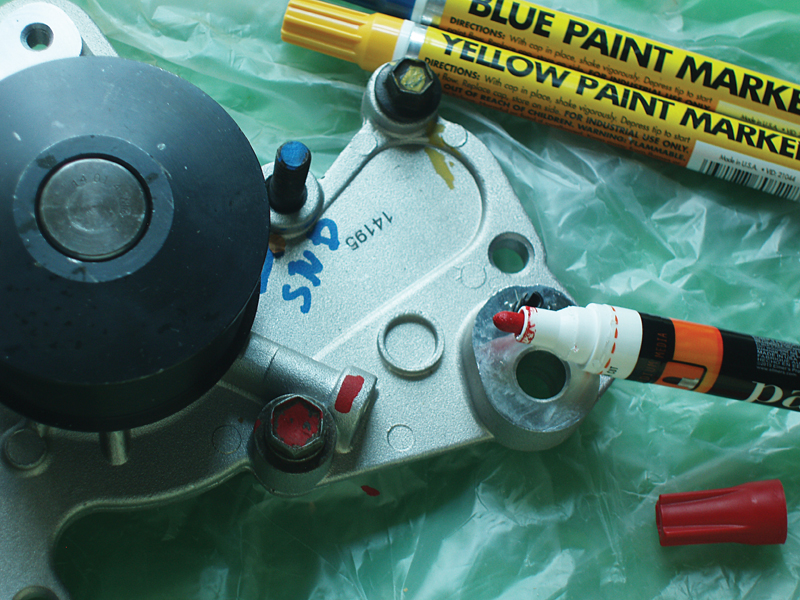
Photo by Scott R. Nesbitt
Little things mean a lot, especially when they help smooth out the workday in the shop.
Paint pens
These are invaluable anytime you’re disassembling complex machinery, particularly if you have to order parts and wait just enough days that you forget the details of what goes where. I use a yellow pen for marking dark-colored items, blue for lighter items such as aluminum parts, and red for an alternate color. Paint pens are practical for a variety of purposes — marking which rubber hose goes to which fitting, identifying which part came off in what order, labeling small units such as trimmers and chain saws with ID numbers, writing on an engine when it will be due for an oil change, or marking which end goes up. The semipermanent waterproof paint dries quickly, resists being rubbed off, and can be removed with chemical solvents.
I found mine in Walmart’s craft department for about $2 (they were twice that much at a local auto parts store). Online prices vary wildly. To see a huge selection of what’s available, including pens that write under water, go to www.markingpendepot.com.
Screw grabbers
Nothing wastes time like having to find that tiny screw you dropped, and no sound is sadder than hearing it tinkle its way down into the depths, never to be seen again. My favorite preventive solution is a nonmagnetic screw grabber (or “starter”). Magnetized screwdrivers and the magnetized screws they hold tend to grab nearby steel and iron. Often, you lose the screw.
Grabbers use spring-loaded tips. The screw hangs on until you can get the threads started. Just pull the grabber away to release the screw. The tool’s thin shaft (about 5/16-inch) gives you good visibility in tight spaces. The photo shows the grabbers for slotted and Phillips screws. There’s a grabber for Torx screws, but mine rolled away into an engine compartment, never to be seen again. Grabbers cost under $10 apiece, and some feature nonconductive fiberglass shafts. Handy.
Wire tracers
Hours of frustration can be avoided with this two-piece tool. A transmitter sends a radio signal into a wire, and the receiver picks up the signal and then beeps or squeals as you move the transmitter along the wire — even a wire bundled in a loom. Shorts, breaks or high-resistance spots in the wire are indicated by changes in the signal tone. My Cen-Tech unit from Harbor Freight (about $25) uses 9-volt batteries and works OK, but the beeper’s volume is a bit too low for my old ears. Spring for a pro-grade set with strong signals for about $75. And read and follow the directions! You’ll destroy the unit if there’s live electric current in the wire you’re tracing.
Salt for the coffee
When my wife, Vicki, was a night-shift nurse, she learned to add some salt to the coffee filter to reduce the bitterness and smooth the taste of the essential brew. We use three shakes for a 12-cup pot. The salt seems to make drinking coffee that’s been on the heat for several hours tolerable, as well as making decaf drinkable. Even my cardiologist endorses the technique despite the low-salt orders he’s issued.
Scott R. Nesbitt is a freelance writer and former GCSAA staff member. He lives in Cleveland, Ga.